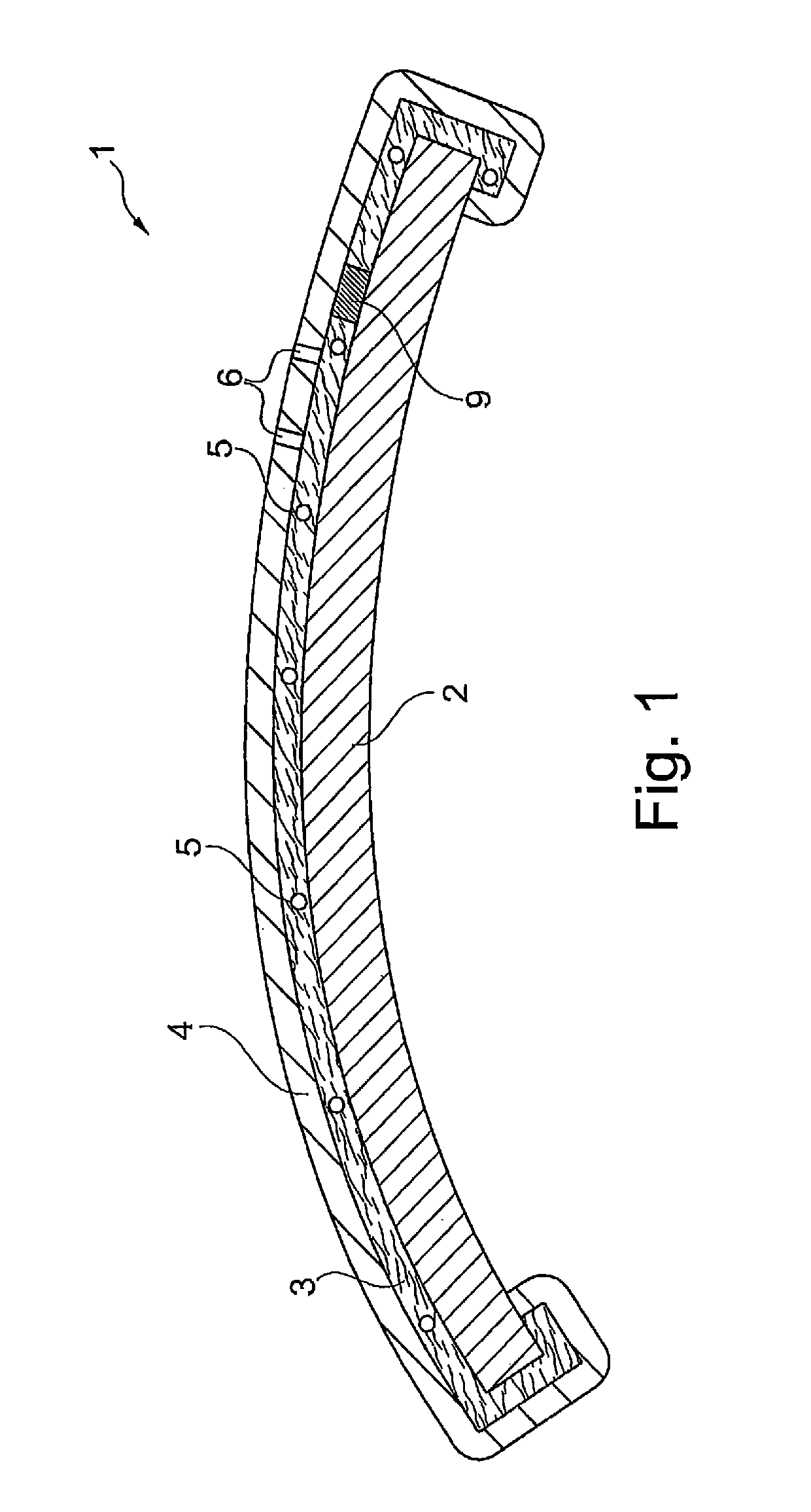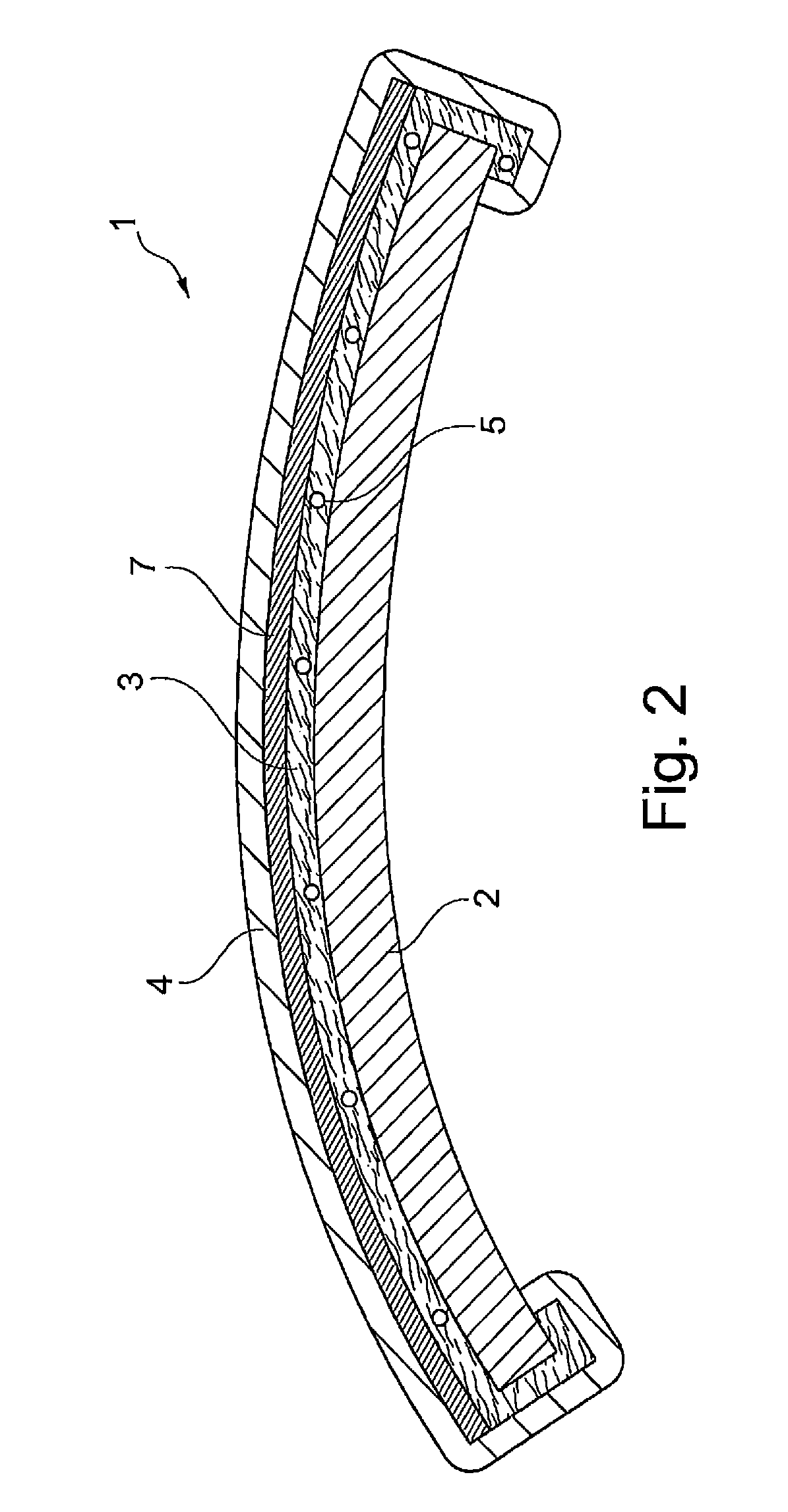Interior lining
a technology for interiors and linings, applied in the field of interior linings, can solve the problems of not being able to use waste heat of the motor to heat the interior of the overall vehicle and aircraft, and wasting time and energy for the engine to release sufficient heat, etc., and achieve the effect of heating the interior of the vehicle and aircraft very quickly and independently
- Summary
- Abstract
- Description
- Claims
- Application Information
AI Technical Summary
Benefits of technology
Problems solved by technology
Method used
Image
Examples
Embodiment Construction
[0032]FIG. 1 is a schematic sectional view of an interior lining 1 in the example of a decorative part in the finished state. The heating layer 3 formed as a non-woven fabric is connected to the upper layer 4 formed of leather to form a layer composite, wherein the connection is formed by lamination of the heating layer onto the upper layer 4. A heating wire 5 extends inside the heating layer 3 and extends substantially over the entire surface area of the carrier 2 formed as a decorative part of a door lining. The layer composite formed of the heating layer 3 and upper layer 4 is press-laminated onto the carrier 2, wherein the heating layer preferably has a thickness of 0.3 to 0.8 mm in the end state. The heating wire 5 has electrical connections (not shown) so as to supply the energy required for heating.
[0033]The upper layer has a perforation 6, illustrated by way of example, so as to accelerate the passage of heat to the vehicle interior. The heat produced at the heating wire 5 i...
PUM
| Property | Measurement | Unit |
|---|---|---|
| thickness | aaaaa | aaaaa |
| thickness | aaaaa | aaaaa |
| thickness | aaaaa | aaaaa |
Abstract
Description
Claims
Application Information
 Login to View More
Login to View More - R&D
- Intellectual Property
- Life Sciences
- Materials
- Tech Scout
- Unparalleled Data Quality
- Higher Quality Content
- 60% Fewer Hallucinations
Browse by: Latest US Patents, China's latest patents, Technical Efficacy Thesaurus, Application Domain, Technology Topic, Popular Technical Reports.
© 2025 PatSnap. All rights reserved.Legal|Privacy policy|Modern Slavery Act Transparency Statement|Sitemap|About US| Contact US: help@patsnap.com



